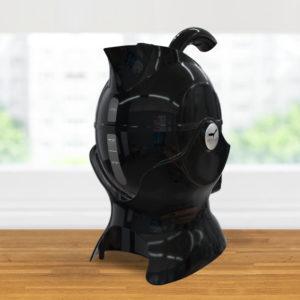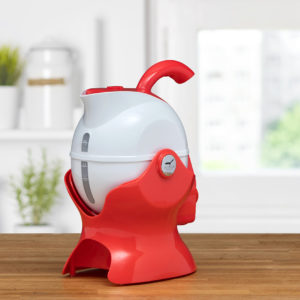How mobility and daily living aid retailers can maximise December footfall and sales.
The final weeks of the year present a unique opportunity for mobility and independence-living retailers: while many are winding down, there is still a last burst of buying energy.
Get ahead by making a few simple but effective tweaks – and you’ll help your store finish the year strong and set the tone for Q1 2025.
Why December still matters
- Recent UK data shows a 28.5% week-on-week footfall surge across retail destinations on 23rd of December as last-minute shoppers hit stores.
- However, a broader view from the British Retail Consortium (BRC) indicates high street footfall in December fell 2.2% year-on-year, signalling that the window for impact is tight.
- Another survey reveals that 55% of Christmas-gift spending is expected to happen online, with only 36% in-store – meaning physical retail must make its space work harder.
All of this means: the opportunity is real, but the margin for error is small. A few targeted tactics can move the dial.
1.Prioritise Best-Sellers and Essential Daily Living Aids
Your customers – both seniors and adult children buying for them – are looking for practical, confident purchases rather than big research projects right now.
- Move every-day used products (kettles, trays, mats, walkers, canes) to prominent positions.
- Use signage to highlight ‘’Ideal for everyday use’’, ‘’Gifts that make home life easier’’. Or ‘’last minute but meaningful’’.
- Because many consumers are shopping later, and perhaps more cautiously, ensure those essential items are easier to find and pick up.
2.Simplify the Message for Adult-Child Shoppers
One clear trend in the mobility/daily living sector: adult children increasingly shop for their parents during winter and after visits.
- Create a dedicated zone: ‘’Helping Mum & Dad Stay Independent’’.
- Provide short talking-points for staff: ‘’This kettle is easy-pour for reduced grip strength’’, ‘’This tray helps reduce spill risk on uneven surfaces’’.
- Use mini-case studies or quotes: real-life lines such as ‘’My Dad uses this daily and couldn’t manage without it’’ add trust.
These customers are often pressed for time and knowledge – make it fast and relatable.
3.Check & Tweak Your In-Store Visuals & Stock Layout
In December, time is short and decisions are quick. A few simple tweaks can help convert the foot traffic you have into sales.
- Eye-level Placement: Bring your top SKUs to the eye-line rather than hidden shelves.
- Bundle Displays: Combine a kettle + grip mat or liquid level indicator; show ‘’complete solution’’ rather than single pieces.
- Call-out the finish-line of shopping: Use signs like ‘’Last few days to secure a meaningful gift’’ or ‘’Still searching? Try these practical daily living products’’.
- Stock floor-check: Ensure you have sufficient stock of your top SKUs – nothing stops conversion like ‘’we’re out of stock’’.
Footfall surges happen at specific times: for example, the data shows that 23rd of December is often one of the biggest in-store days.
4.Offer Reassurance & Convenience
Christmas shopping for mobility aids has added concerns – reliability, ease-pf-use, gift-appropriateness.
- Ensure staff are briefed with quick FAQs: ease-of-use, safety benefits, return policy if gift doesn’t work out.
- Highlight features: ‘’Minimal lift required’’, ‘’Stops spills’’, ‘’Non-slip base’’ – these reassure.
- Provide gift-wrap or quick checkout if you can – the convenience factor matters more late in December.
Given that many UK consumers are still cautious about spending, adding trust-drivers is important.
5.Plan for the Transition from Christmas to Q1 Momentum
While you optimise the final Christmas push, keep in mind what follows next. The best retailers use December as a springboard into early-year success.
- Update displays with both ‘’Gift’’ and ‘’Everyday-Use’’ messages – so once the Christmas rush peaks, you are ready for January purchases.
- Keep your best daily living aids visible- the same items that work in December can become ‘’New Year, improve home life’’ buys.
- Train staff now: shift conversation from ‘’Gift for parent’’ to ‘’how this product improves daily tasks’’.
This helps carry momentum into January when consumers are looking for practical self-improvement and home-support solutions.
Yes – December is busy. Resources are stretched. But for mobility and daily living aids retailers, it remains one of the most important windows of the year.
By making a few small tweaks now – positioning essential aids front-and-centre, guiding adult-child shoppers, checking your visuals and layout, offering convenience and trust, and bridging into Q1 – you can ensure your business doesn’t just finish the year, but finishes strong.













Leave a Comment